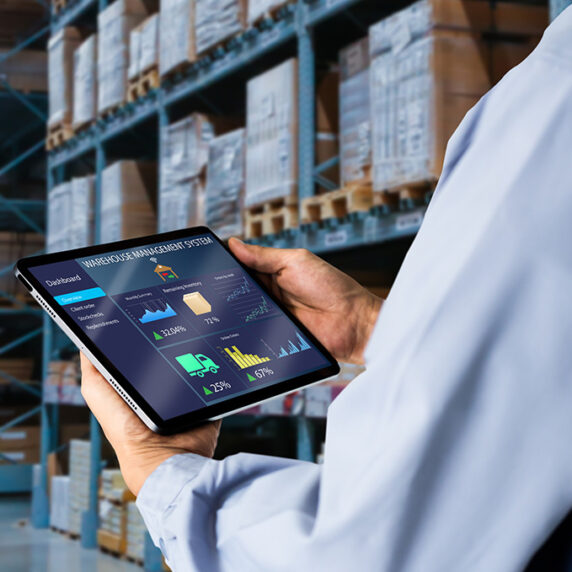Why You Need to Embrace Autonomous Supply Chain Planning
Editor’s Note: This piece (with small variations) first appeared as a Supply Chain Brain editorial joining the debate about autonomous software and its impact on work and society.
We are living in a new wave of automation. Machines are already performing many tasks previously done by humans, and the increased use of various smart technologies such as machine learning means the changes have only begun.
There is a very understandable concern about how machines will impact jobs. But at our company, we have already seen and experienced this trend toward automation begin to play out in supply chain planning productivity, and see nothing to fear. Our conclusion is that the right automation technology in the right place is not a job killer; its a job changer. What’s more, there is a tremendous upside that’s not immediately obvious; one I will describe later. The bottom line is that automation is happening and, rather than worry about it, it’s time to accept and take advantage of it.
A sea-change in attitude is already developing towards planning. Most companies are now experiencing a constant need for human intervention in dealing with the flood of data that a typical supply chain produces every day. For the first time, we’re seeing companies asking: “Why can’t we be more productive with our planning system? Why do we have to spend so much time nurse-maiding our software? Why is the process so inefficient?”
Large enterprises may require a veritable army of planners. For growing mid-market firms, it represents a significant overhead cost and a challenge to sustain a good team. If you are in the happy position of growing at 20-30 percent per year and you have five planners now, it’s natural to project that you’re going to need 10-12 planners in a few years. And these people are hard to find, especially ones who are good at their job.
Companies that embrace a low-touch, more automated approach to planning and replenishment can make impressive gains in efficiency. For example, Lennox Residential, a large Texas-based provider of HVAC systems, shared recently that improvements in their operations had allowed them to achieve 99.7 percent no-touch planning. That means, out of a thousand planning decisions, 997 have required no manual intervention at all.
Meanwhile, Costa Express, a UK coffee shop chain that’s expanding into continental Europe now has one single planner handling 5,600 points of sale. Instead of an army, they have one planner using a highly automated planning system that runs largely on its own.
Internet retailer Wayfair is a classic case of a mid-market company experiencing rapid growth – more than 50 percent a year at present. After implementing supply chain planning process automation, the company slashed the amount of time spent in planning to one sixth of what it was previously.
Improving planning productivity leaves planners free to work in ways that add enormous value. They can concentrate on looking at the business overall, understanding the market and adding business intelligence, rather than slogging through the mundane tasks of data cleansing and statistical review. By leaving that to the computers, there is a more focused team engaged in highly skilled work instead of drudgery.
For the corporation, more intelligent software that can run in an autonomous manner dramatically reduces manual effort, improves planning efficiency, and significantly reduces costs. But, as I mentioned, there is another, deeper benefit. The value of adopting autonomous supply chain planning is not just about the ROI and dollars saved by being more productive; it is that, once you automate these basic tasks, you are in a far better position to make transformational changes in your supply chain.
At Costa, for example, execs were able to start thinking about their supply chain in an entirely different way and – more than that — to think about the entire coffee business in a different way, offering barista-style service in locations like train platforms and highway service areas where it wasn’t possible before. Before implementing a highly automated supply chain, they could not have dramatically increased the size of their business. Now, the skies (or at least the world’s coffee-drinkers) are the limit.
Lennox Residential has experienced the same widening of possibilities. Now that they have a highly automated supply chain, they’re looking into using the Internet of Things (IoT) to get constant information about the performance of parts in their air conditioners, so they can proactively alert customers when there’s a problem or a part is coming to the end of its life. That way, when there’s a hot spell, they’re already set to stay ahead of the flood of demand; they can anticipate problems.
At the UK’s National Health Service, supply chain planning process automation has allowed the supply of donated blood to be delivered on a “pull” rather than “push” model, getting life-saving supplies where they’re needed more often and more reliably.
These things simply were not possible until they got a highly automated supply chain planning process in place. It became a foundational building block for looking at their business in a transformational way.
This transformational opportunity is comparable to the changes in retailing enabled by the Internet. At first, it was great that you could shop from your computer and receive goods delivered at home. But then internet commerce started taking advantage of the myriad possibilities unique to online shopping – such as Amazon taking note of what books and movies you’ve liked in the past, and suggesting similar ones. Other bricks-and-mortar services such as loyalty programs and wish lists suddenly became much easier to use and more sophisticated. Once the foundation was in place, it opened up huge capabilities that simply weren’t possible before. Imagine how the same sort of transformation could create hitherto unthought-of possibilities in your supply chain.
Automation should allow us to step back and take a more supervisory role in our businesses, while letting the computers do the grunt work behind the scenes. One group, millennials, is becoming more and more comfortable with this idea, and delighted at the innovations. We’re seeing people in their 20s and 30s entering supply chain management who are accustomed to mobile apps performing tasks that used to require manual effort. They’re not threatened by the technology; they’re happy to let the computer take the strain so they can get on with doing what they’re good at. Even if you’re not a millennial, it’s time to learn to embrace the possibilities.







